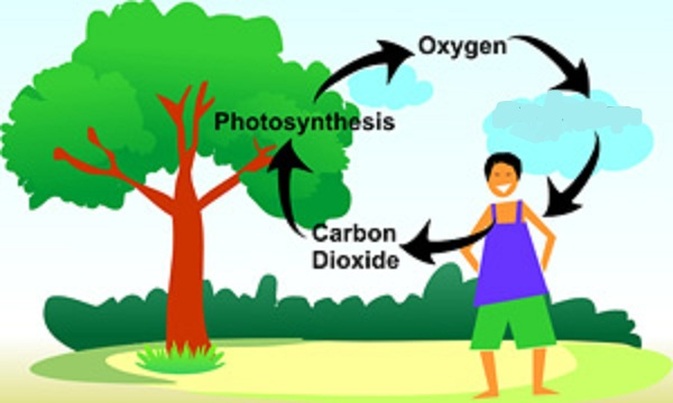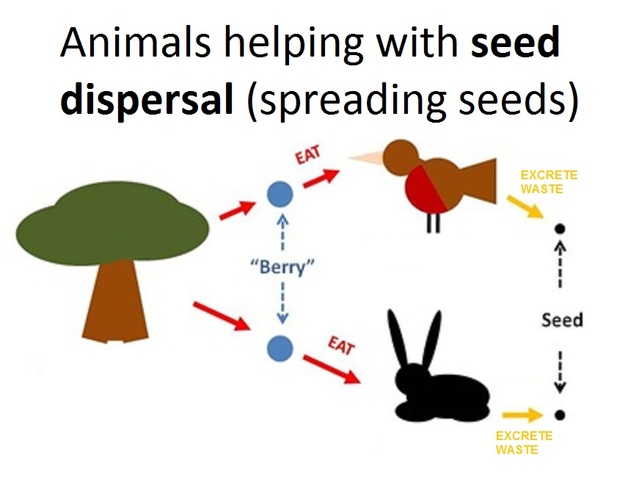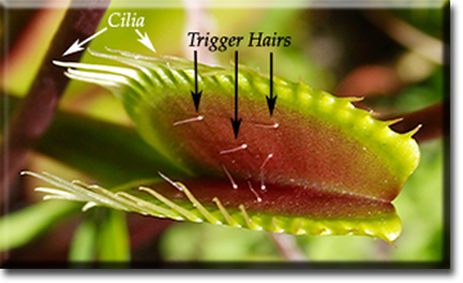"Air recyclers"

Plants play a very important role in helping to provide the oxygen in our atmosphere that we need to breathe.
They use the carbon dioxide that we exhale along with water and sunlight to make sugar and oxygen (this is photosynthesis). This oxygen that they produce is released into the air, which we need to survive.
They use the carbon dioxide that we exhale along with water and sunlight to make sugar and oxygen (this is photosynthesis). This oxygen that they produce is released into the air, which we need to survive.
Interactions of PLANTS and Animals

Aside from relying on insects to help spread pollen for reproduction, plants also rely on animals to spread their seeds.
The parent plant does not want to compete for the same resources (such as water and light) so plants have adaptations to spread their offspring (their seeds).
One of the most common ways that plants do this is to put their seeds in a fruit, which attracts animals to eat the fruit. When they eat the fruit (including the seeds) they digest the fruit, but their bodies cannot digest the seeds. When they excrete their waste product, the seed will come out as well. The droppings will also provide nutrients to help that seed start to grow.
The parent plant does not want to compete for the same resources (such as water and light) so plants have adaptations to spread their offspring (their seeds).
One of the most common ways that plants do this is to put their seeds in a fruit, which attracts animals to eat the fruit. When they eat the fruit (including the seeds) they digest the fruit, but their bodies cannot digest the seeds. When they excrete their waste product, the seed will come out as well. The droppings will also provide nutrients to help that seed start to grow.
Plant Adaptations

Plants need certain nutrients to survive. One of those is nitrogen.
Some plants, like the Venus Fly Trap shown below, get nitrogen by trapping flies and using enzymes to break the insect down.
Note, this is not the plant "eating" the insect for food. It gets its food from the sunlight. The plant is only using this insect to get nitrogen, which it needs to help grow. Another example of how plants interact with insects is when plants rely on insects for pollination. Pollination is how plants are able to reproduce.
One of the ways that plants attract insects is by producing flowers that attract insects, usually by producing a sweet nectar.
When the insects go to the flower to get the nectar, they will brush up against the pollen-producing part of the flower (called the stamen). They collect pollen (the male sex cells) on their bodies. When they visit another flower at a different plant, the pollen on the insect will go inside of the pistil and fertilize the egg (the female sex cell) and this will pollinate that plant. This will result in a seed forming, which will turn in to a new plant.
This is an example of sexual reproduction because it requires two different parents (plants) to make a new offspring (the seed). The offspring will be different from both parents (it will NOT be an exact copy of either parent).
Some plants, like the Venus Fly Trap shown below, get nitrogen by trapping flies and using enzymes to break the insect down.
Note, this is not the plant "eating" the insect for food. It gets its food from the sunlight. The plant is only using this insect to get nitrogen, which it needs to help grow. Another example of how plants interact with insects is when plants rely on insects for pollination. Pollination is how plants are able to reproduce.
One of the ways that plants attract insects is by producing flowers that attract insects, usually by producing a sweet nectar.
When the insects go to the flower to get the nectar, they will brush up against the pollen-producing part of the flower (called the stamen). They collect pollen (the male sex cells) on their bodies. When they visit another flower at a different plant, the pollen on the insect will go inside of the pistil and fertilize the egg (the female sex cell) and this will pollinate that plant. This will result in a seed forming, which will turn in to a new plant.
This is an example of sexual reproduction because it requires two different parents (plants) to make a new offspring (the seed). The offspring will be different from both parents (it will NOT be an exact copy of either parent).
